Past and Present: Tennis Court
A Look at Brooklyn, then and now. What’s the big deal about a tennis court? Well, this isn’t about the game, per se, but about a “court”, another word for a street, an enclave, or neighborhood. Tennis Court was a clever play on words that heralded the beginning of the suburban development of Flatbush. Before…

A Look at Brooklyn, then and now.
What’s the big deal about a tennis court? Well, this isn’t about the game, per se, but about a “court”, another word for a street, an enclave, or neighborhood. Tennis Court was a clever play on words that heralded the beginning of the suburban development of Flatbush. Before there was a Prospect Park South, a Ditmas Park, or Caton Park, or the Beverley Squares East and West, there was Tennis Court. Yet this neighborhood is not on the list of desirable suburban enclaves lauded by real estate agents. Most people have never heard of a neighborhood called Tennis Court. And for good reason, because although the street is still there, the exclusive enclave of fine houses no longer exists.
The 1870s and early 1880s saw the beginnings of suburban style housing in Flatbush, but there was no rhyme or reason to it; there were just scattered houses on streets that had just been recently mapped. Most of the land in Flatbush still belonged to the descendants of the Dutch families who had settled there in the 1600s, or to the Dutch Reformed Church. But in 1886, a local entrepreneur named Richard Ficken bought some land in the center of Flatbush, and began developing an entire small neighborhood, one that he called Tennis Court.
Ficken was the first Flatbush developer to take his land, enclose it with some kind of boundaries, and tightly control what kind of development occurred within those boundaries. He divided his land into fifty foot wide lots, with the stipulation that all of the homes built there had to cost at least $6,000 to build, and had to sit deep on the lot, creating spacious front lawns. Ficken laid down streets, and sidewalks, had pipes laid, and planted trees at the lot lines. At the entrance of Tennis Court, at Ocean Avenue and Tennis Court, he had brick gate posts with “Tennis Court” inset into them, to delineate the boundaries of the neighborhood.
If you think this sounds just like the layout of Prospect Park South, you are correct. Dean Alvord, PPS’s developer, cribbed a lot of ideas from Mr. Ficken when he created his exclusive enclave. Alvord’s genius was in taking a good idea, and giving it steroids, which he did, quite well. As for Tennis Court, it developed into a handsome little development with houses set closer together than PPS, but still with that now familiar suburban Flatbush collection of disparate housing styles of the late 19th century.
The Knickerbocker Field Club, a tennis and social club, was founded in 1889, and Ficken was more than happy to lease them land for their courts and clubhouse. The Parfitt Brothers designed a fine Colonial Revival Field House for the club, which abuts the subway tracks that divide Prospect Park South from the other side of Flatbush. Ironically, and rather amazingly, five of the original clay courts are still there, at East 18th Street, off Church Avenue. The landmarked clubhouse burned down in 1988, a case of arson. Most people have no idea that the club is still operating, a hidden treasure in Flatbush. The Times had an interesting article on the club, here.
Part of the reason no one knows is because the development called Tennis Court is gone. By the 1920s, it was deemed more prudent to fill this part of Flatbush with large elevator apartment buildings. Single family houses were too large, too expensive, and couldn’t accommodate the numbers, as the middle and working classes poured into Flatbush. All of Tennis Court was bought up, and razed for the apartment buildings that stand there now. Tennis Court lies between Ocean Avenue and East 18th Street, near Church Avenue. The period postcard, from 1910, shows the street as seen from Ocean Avenue. The Google street scene shows the same, today. What a difference. GMAP
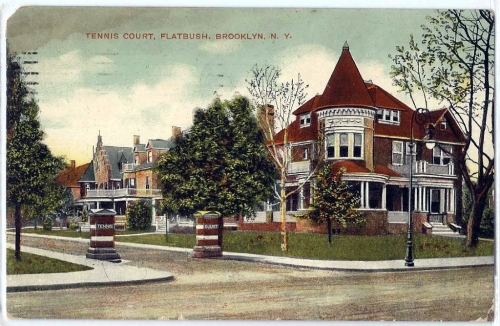

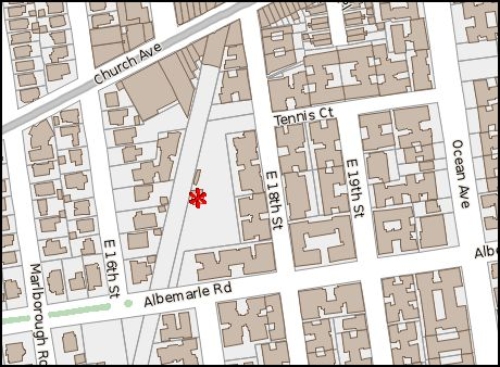

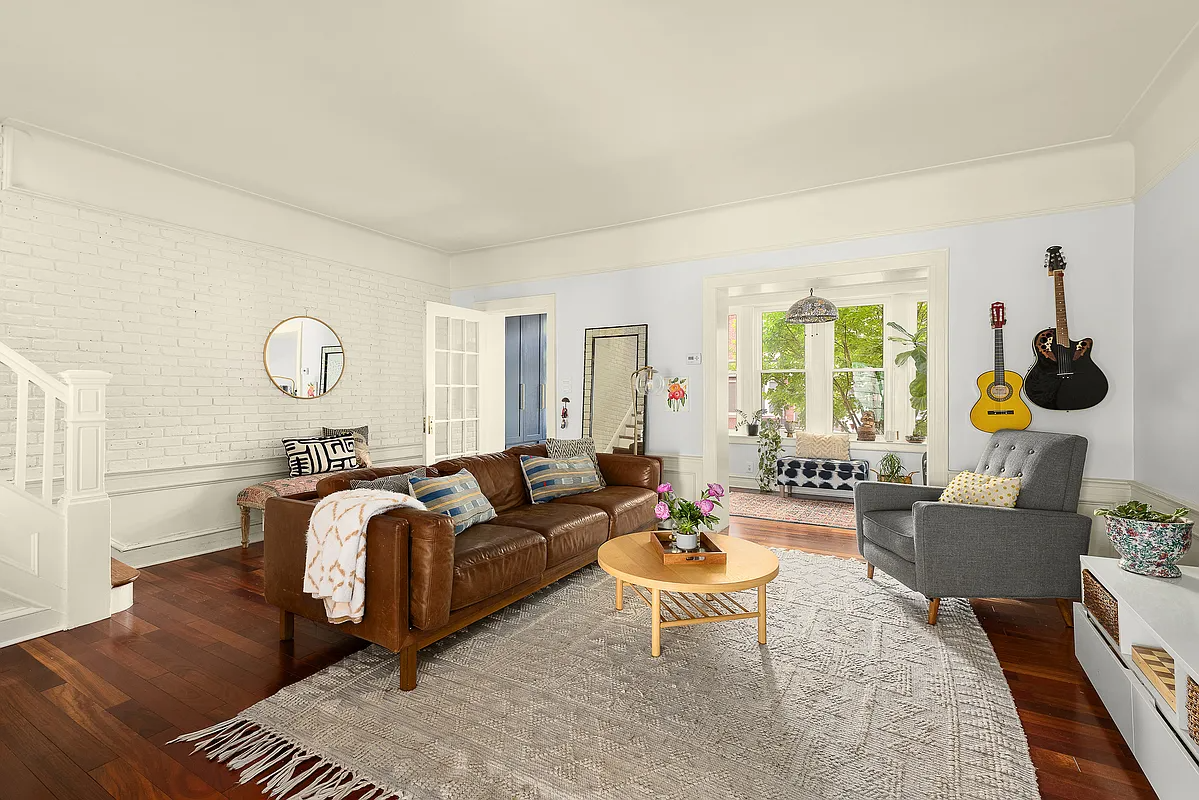
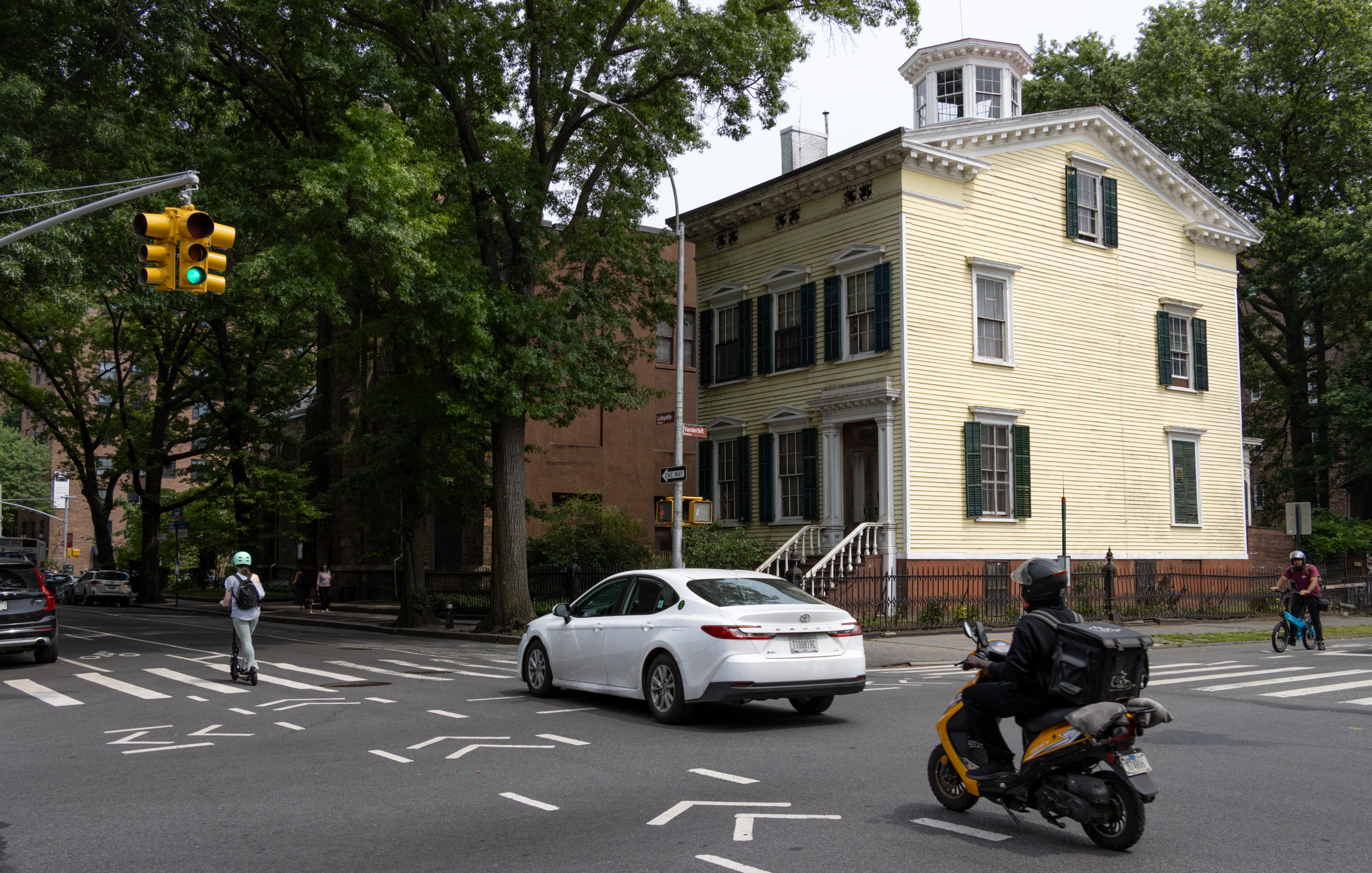
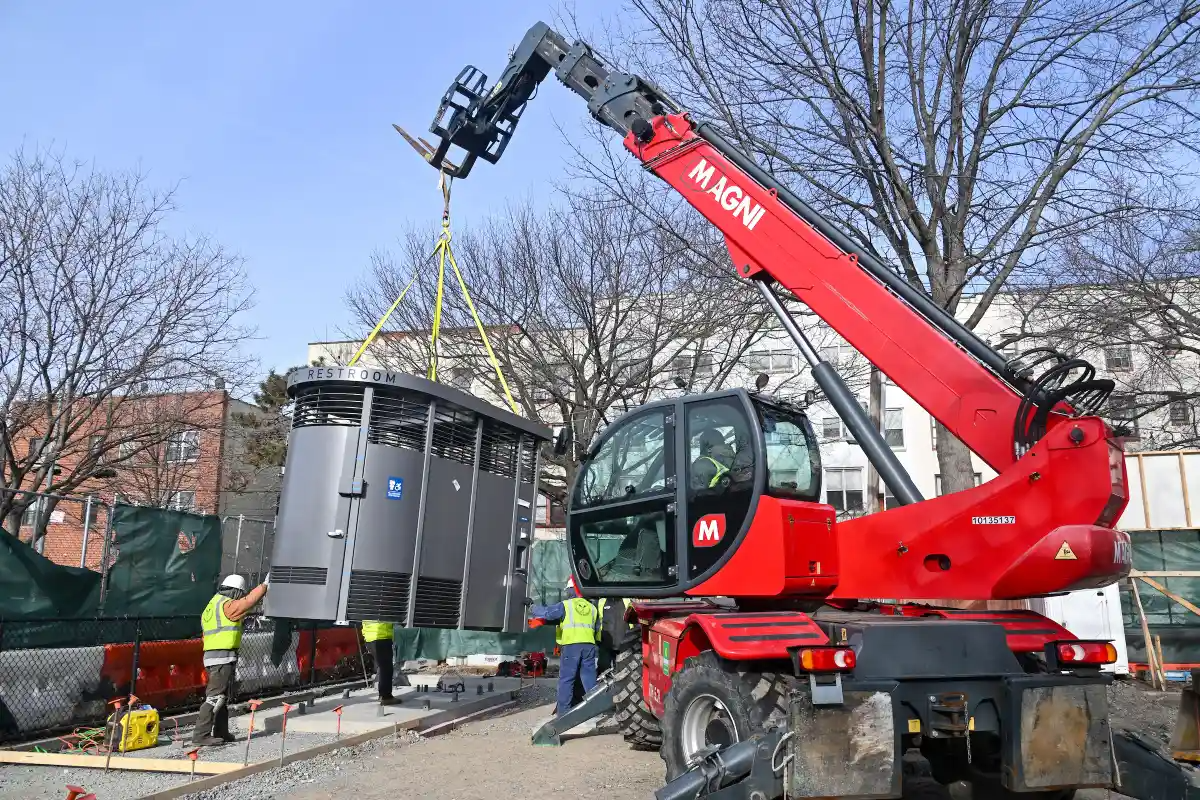

What about the history behind nearby Crooke Avenue?
It is my understanding the developer was swindler.